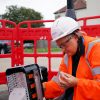Gigabit Broadband Voucher Scheme Tweaks UK Eligibility Criteria

The Government’s Building Digital UK (BDUK) agency has tweaked the eligibility criteria for their Gigabit Broadband Voucher Scheme (GBVS) again, which among other things now requires that a home or business must have existing available broadband download speeds of less than 1Gbps in order to be eligible (previously it was 100Mbps).
Just to recap. The GBVS typically offers grants worth up to £4,500 to help remote rural or poorly served urban homes and businesses get a gigabit-capable broadband (1Gbps) ISP service installed, which as above, is now also available to areas with speeds of “less than 1Gbps” – assuming there are no near-term plans for a gigabit deployment in the same area (either via private or state-aid funding).
The GBVS is currently only open to a limited number of areas across the United Kingdom (i.e. Derbyshire, Birmingham and the Black Country, Merseyside and Greater Manchester, Greater London, Scotland and the Isle of Wight.) and, until recently, it was also focused almost exclusively on catering for the hardest to reach rural areas. But in March 2025 this scheme was also opened up to help tackle some poorly served urban areas too (here).
Advertisement
The latest changes to voucher eligibility, which somewhat slipped under our radar when they were quietly introduced a week ago, include the removal of the rurality clause in order to enable premises under the urban extension of the scheme to be included in projects, as well as urban premises identified through BDUK’s related market engagement process.
As above, the threshold for the existing speed at a premises (home or business) has also increased from 100Mbps to 1Gbps, although the requirement for a “step change” in service speed remains in place (reflecting at least a doubling of speeds).
The rules also now state that premises deemed to be under construction or built within the last two years are ineligible for vouchers, which is perhaps because the law now requires that developers of most new build homes should already be ensuring that such properties are built to a gigabit-capable standard. But there are some exceptions to that law, so there may be cases where this tweak is unhelpful (e.g. smaller individual house builds in very remote areas).
Finally, the classification rules are now aligned to the rest of Project Gigabit and there are two additional ways for BDUK to assess whether a home or business is likely to receive gigabit capable broadband without public subsidy (i.e. local intelligence gathered by BDUK, and all premises at the same location are now ineligible for the GBVS if one premises at that location can already access gigabit broadband).
Advertisement
However, it’s unlikely that any of this will have a huge impact on the scheme’s progress, not least because the limited (highly variable) level of availability doesn’t exactly help, and it’s now much less user-friendly / accessible than it once was (BDUK previously scrapped their availability checker and now require people to first manually identify a local supplier from deep within the scheme’s info. pages).
The eligibility criteria changes apply to new projects submitted from 5th June 2025 onwards and will not impact existing approved projects.
Mark is a professional technology writer, IT consultant and computer engineer from Dorset (England), he also founded ISPreview in 1999 and enjoys analysing the latest telecoms and broadband developments. Find me on X (Twitter), Mastodon, Facebook, BlueSky, Threads.net and Linkedin.
« ISP Vodafone UK Officially Launch Pro 3 Broadband Plans and WiFi 7 Kit























































> all premises at the same location are now ineligible for the GBVS if one premises at that location can already access gigabit broadband
Err what? Other premises in my postcode have had access to Virgin Media’s Gig1 for about 5 years. Virgin refuses to extend the network to my home but I’m ineligible for GBVS? Where’s the logic in that?
6 houses in the same postcode can also get FTTP from Giganet/Cuckoo/APFN/whatever they are called these days.
Is the BDUK value for money or should it be abolished and the savings passed on to the public by reducing the taxes on broadband provision? Discuss.
Yes. No.
Very easy yes. All it has done was keep CityFibres unsustainable debts somehow less unsustainable. Bigger tax burden than in WW2. UK DOGE needs to root out all the pork or soon debt payments will be 100% of the GDP
We have been trying to get FTTP in our community for over 5 years now. Last autumn BDUK appointed Freedom Fibre to build. They then at the end of 2024 performed limited survey work and everything went quiet until March this year when Freedom Fibre terminated their contract for reasons currently undisclosed. We are still waiting for BDUK to announce who is to replace them.
I wonder if this change is targeted at gfast enabled properties (that can’t actually order gfast from retail CPs) so are now eligible for GBVS.
And so the saga continues. Prime example of how these constant changes make improvement impossible in some areas, is a small village in Aberdeenshire. Scottish Governments old DSSB programme said all the properties would be upgraded to full-fibre in 2020. This did not happen. Residents then gathered together to use GBVS vouchers to fund a Fibre Community Partnership. This was scuppered because Scottish Government was developing their next, Reaching 100% programme. After those plans were finalised, the Village was yet again excluded from any build plans. Openreach then suspended their Fibre Community Partnership programme, and other providers were contacted, but were far more expensive. Openreach re-opened their Fibre Community Partnerships scheme, and the residents gathered together to use GBVS – except that had now been paused in Scotland due to Project Gigabit development. So they looked at using the Scottish Broadband Voucher Scheme (SBVS) instead. Except these vouchers now cant be used for full-fibre deployments, in case that interferes with Project Gigabit procurements. So, they are now waiting on the developments of Project Gigabit’s Lot 5 in Scotland, which is still open for procurement (was expected to be closed and awarded by now). Even if the award is announced soon, we have been informed there is a 12 month survey period before build plans are finalised – so they’ve got at least a year to wait until they know if they’re included in upgrade plans. If the village is still excluded, then the GBVS should be re-opened to allow a project – except that if a property in the area has full-fibre (which is the case, served by an entirely different exchange), then GBVS is no longer in play? Empty promises for over 5 years already, with no clarity in sight. Starlink, 4G, Fixed Wireless – these solutions have all been used in the area now, so if full-fibre isn’t going to be an option, there should be some honesty and transparency on this.
Pretty much reflects the experience across swathes of the CDS area. Except the magic bullet is the Type C calloff contract, except of course there’s zero visibility of when a UPRN will be actually built. With the usual cop-out of commercial sensitivity.
I’m still trying to find out why on earth Openreach were in the list of suppliers for the briefly-opened Devon voucher availability when they weren’t actually doing any Community Fibre schemes.
Mike p what date was that Devon voucher scheme might be able to give a bit of context around openreach community plans depending what date that was
Meanwhile, I’m stuck on 3mbps ADSL or 1mbps FTTC, while they spend billions rolling out gigabit internet to people who can already get 40-70mbps FTTC
I’ve absolutely had it!
@Chris: l think you may be meaning 3 Mbps down and 1 Mbps up on ADSL. FTTC would give you a faster speed than ADSL.
@I remember Scriber: Not always. I support customers where the VDSL service is slower than the ADSL (or they just can’t get VDSL at all due to distance from the cabinet). VDSL drops off much quicker than ADSL – so a long distance from the VDSL cabinet you are likely to find that ADSL is actually quicker and more reliable than VDSL.
*Fibre Scriber, no idea where “I remember” came from!